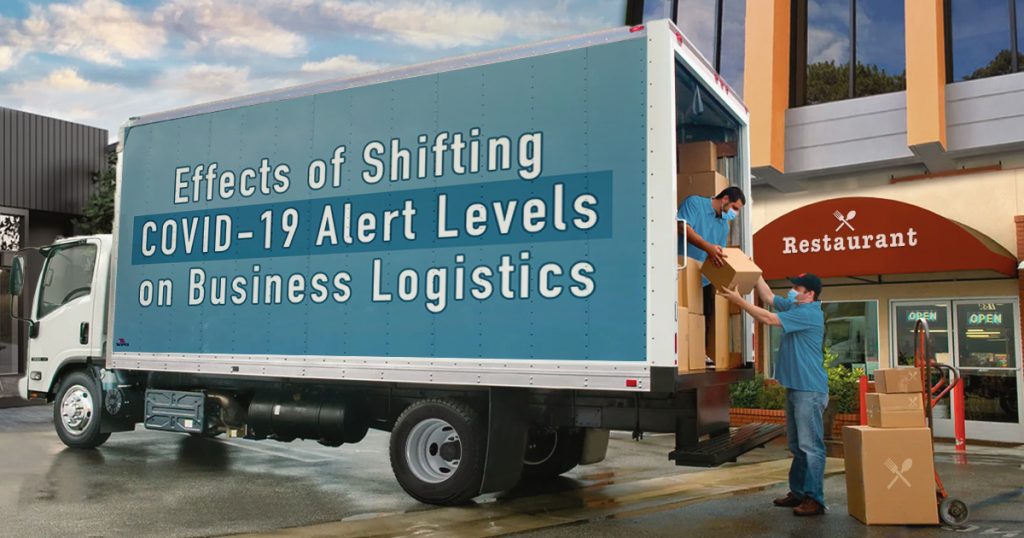
As the Philippines government continues to monitor the spread of COVID-19, it has raised the alert levels for different parts of the country. This has caused some businesses to reevaluate their logistics plans. In this article, we will discuss the possible effects of a new alert level on business logistics in the Philippines and how to prepare for it.
The government’s pandemic task force is expected to lift the alert levels on Feb. 14, 2022, as it continues to evaluate existing restrictions in light of the COVID-19 infection rate decrease. As of February 7, the majority of areas, including Metro Manila, are in moderate danger, whereas four others – Davao province, Zamboanga peninsula, Soccsksargen (South Cotabato, Cotabato, Sultan Kudarat), and Northern Mindanao, are at high risk.
On Tuesday, the Metropolitan Manila Development Authority (MMDA) said Metro Manila mayors are prepared to ease restrictions on firms and businesses once the National Capital Region’s (NCR) classification is lowered from Alert Level 2 to the most lenient Alert Level 1.
Effects of Shifting COVID-19 Alert Levels And How to Overcome Them
The COVID-19 pandemic has made things very difficult for businesses and their logistics. They are in a situation where they must make decisions based on what is best for the company while also taking into consideration how it will affect customers as well as suppliers. The government’s decision to shift COVID-19 alert levels has had a big impact on business operations and logistics in the Philippines. The changes are affecting everything from manufacturing to transportation, delivery times, supply chains, and employee safety measures at work sites. There may be some short-term disruptions as well but these should not be long-lasting once everything gets back to normal again.
The COVID-19 situation has changed the way people do business, and there is no doubt that it will continue to evolve over time. Businesses need to prepare themselves for this new reality by adjusting their operations accordingly so that they can stay ahead of the competition. It’s not going to be easy but it is definitely doable with a lot of hard work and by keeping an open mind.
Business logistics is a crucial element for business operations. The supply chain will be affected if there are changes in alert levels. A more relaxed quarantine level means that businesses can operate at full capacity and with fewer restrictions such as physical distancing and wearing masks to prevent virus transmission. Businesses will be able to ship and deliver more products or services with these changes.
In preparation for a new alert level, businesses should start planning now so that they can make the most of it when it comes time to shift gears again. Here’s how:
1. Identify your customers’ needs and wants. What products do they want? If a business knows what its clients need, then it can adjust accordingly by adding more stock or creating new offerings that will satisfy their demand for these items. The change in alert level might bring about changes as well but it’s best to know beforehand so there will be no surprises.
2. Review your processes and see which ones can be improved or streamlined. This is especially important during a time when resources are tight. Efficiency will help businesses save on time and money so that they can focus their efforts on more important matters such as meeting customer demands.
3. Manage your inventory levels and keep track of how much stock needs to be replenished. It’s better if there are no delays when it comes time for delivery because customers don’t want products that aren’t available at the moment or worse yet, out-of-date items being sent their way instead. This can lead to disgruntled clients who might not come back again anytime soon which isn’t ideal for any business.
4. Communicate with your suppliers and make sure that they are also prepared for the change in alert level. Establish timelines and communicate expectations so that everyone is on the same page when it comes to supplying goods or services to your company. This goes both ways too, as suppliers might need help from businesses during this time of uncertainty too.
5. Have contingency plans ready in case things don’t go as planned. It’s always better to be safe than sorry. For example, if there is an unexpected delay in delivery because of the change in alert level then you’ll need new ways of getting those orders out faster or finding alternative solutions so that customers aren’t left disappointed at the end of their shopping experience with you.
SEE ALSO:
